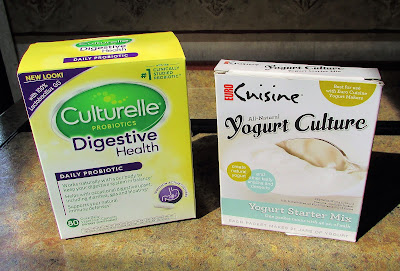 |
| Stained Helicobacter pylori on Stomach Lining ( Epidemiology and Diagnosis of Helicobacter pylori Infection ) |
But I didn’t have any of those symptoms. So why did my doctor decide to test me for H. pylori? Did she think that because I had lived in Mexico for over three years and traveled there extensively for more than twenty-five years that I was a high-risk candidate for an H. pylori infection? My blood test results came back positive. I did have H. pylori bacteria living in my stomach. How long had I had that?
It turns out, my risk of having H. pylori in my stomach is fairly high based on statistics. Over 50% of the world’s population has this gram-negative bacillus growing on the mucous lining of the stomach. In fact, according to the Centers for Disease Control and Prevention (CDC), two-thirds of the world's population is infected with H. pylori, so the odds that I am one of those who has acquired it isn’t all that strange.
 |
| We Dine at Reputable Restaurants in Mexico & Drink Purified Water |
H. pylori infection
is more prevalent in developing countries such as México and those in Central
and South America, as well as Asian countries including China. Since I have
been traveling to and living in México, as well as Costa Rica and Ecuador, for
over 30 years, the odds are that I picked it up somewhere along the way. Of
course, H. pylori can be contracted in
the U.S., Canada, or any country, so who knows where I picked it up, but living in Mexico is not necessarily to blame, though it could have been the source. Add to
that, my 20-year history of GERD (Gastroesophageal reflux disease), sometimes
severe enough to cause prolonged vomiting, and it must have occurred to my
physician that I was a good candidate for the H. pylori blood test.
Why was it important
for me to be treated for H. pylori? Many people carry these bacteria in the
stomach their entire lives and never undergo treatment. Most infected people (more
than 70%) are asymptomatic, without symptoms. But there are risks of leaving it
untreated, especially once symptoms begin.
When signs or
symptoms do occur with H. pylori infection, they may include:
·
An ache or burning pain in your abdomen
·
Abdominal pain that's worse when your stomach is
empty
·
Nausea
·
Loss of appetite
·
Frequent burping
·
Bloating
·
Unintentional weight loss
Since its discovery in 1982, H. pylori has been known to be
a principal cause of peptic ulcer disease and as the main risk factor for the
development of gastric cancer. About 15% of infected individuals will develop
peptic ulcer (duodenal or gastric) or gastric cancer as a long-term consequence
of infection. I already have a genetic risk for gastrointestinal cancer, so,
yes, I’m going through with the whole, nasty treatment process.
What’s so nasty about
the treatment? Well, have you ever heard of an infection that requires
treatment with three antibiotics at a high dose plus a proton pump inhibitor, all
administered simultaneously for two weeks? That’s what it takes to eradicate
the resistant H. pylori bacteria and allow the stomach ulcer to heal. There are
various FDA-approved treatment regimens. My doctor prescribed amoxicillin
500mg, two capsules twice daily, plus clarithromycin 500mg, two tablets twice
daily, plus metronidazole 500mg, one tablet twice daily, plus omeprazole 20mg,
one capsule twice daily, all taken for two weeks. I was not looking forward to
this course of therapy!
The side effects of
the medications were worse than the symptoms I had been experiencing! The
stomach upset, even when taking all pills after meals, and the diarrhea this therapy
caused were enough to make me seriously consider stopping the medications after
the first week! The horrible metallic taste in my mouth from the metronidazole
was one of the worst side effects. At least it didn’t alter the flavor of food.
I powered on, determined to complete the treatment and eliminate this nasty
bacterial infection.
 |
| No Alcohol During Treatment for H. pylori Infection! |
 |
| Sources of Lactobacillus for a Healthy Stomach & Intestine |
I invite you to check out my Amazon.com Author Page to explore more of my stories about "Healthy Living and Traveling in Mexico".
Australia: Amazon.com.au *
I invite you to SIGN UP for my "Healthy Living and Traveling in Mexico Newsletter", published monthly with stories about our latest adventures, my recent blog articles, and news about my books.
Thank you for reading my books and blogs. I look forward to hearing your comments and reviews.
Terry L Turrell





Thanks for the post, I learned quite a bit. I had H. pylori in my early thirties and was treated successfully. I do still have stomach issues, but was tested again a few years ago for H. pylori and the result was negative. I had never traveled to Mexico or any other country at that time. I enjoy your posts! Note from a graphic designer...your articles would be easier to read without the red background and white text. Black type on white background is best. ;)
ReplyDeleteThanks for reading my blog and your comment about your own experience, Sue. (I'm not sure you saw my reply so I added it again.)
DeleteI understand completely what you mean about this red background. I set up the template several years ago and have been postponing what appears to be a total rework to change it. I guess it's time to bite the bullet and do it. Thanks for your your feedback on layout! (I reworked the format based on your comment. I appreciate the feedback) Terry
Thanks for reading my blog and your comment about your own experience, Sue.
ReplyDeleteI understand completely what you mean about this red background. I set up the template several years ago and have been postponing what appears to be a total rework to change it. I guess it's time to bite the bullet and do it. Thanks for your your feedback on layout! Terry
This comment has been removed by the author.
ReplyDeleteHi Terry, I love your blog! I too am an early retiree and a Zumba fan (my teacher Norma is a friend of yours). Anyway, I am actually working because I found something that all expats need - International Health Insurance - which allows you to choose any private hospital or doctor within Mexico and most of the world). I am wondering how I might be able to share that info with your followers? I did not see a contact button, so please excuse me if this is the wrong place. Warm Regards, Jamais McCullough Trujillo PS...don't know why but it showing an old email address here....I just joined your blog under rub_jam@ ....
ReplyDeleteHi Jamais,
DeleteThanks for reading my blog and for your positive comment. What is the name of your International Health Insurance company? Thanks for following.
Terry
Thanks for sharing this, Terry! Makes me wonder if either my husband or I have this and I will save your post for future reference, just in case. Hope you're all 100% good now. :-)
ReplyDeleteHi Emily,
DeleteIt's an easy blood test to determine if you have H. pylori...not so easy to get rid of it. I have recovered from the nasty treatment and seem to be fine. I will continue taking Culturelle daily to restore the good flora in my gut and I will get retested in a year to be sure the infection is gone. Now, on home to Mexico!
Terry
Thank you, Ana E, for reading my article and for your nice comments. I plan to have many more blog posts. Have you "Followed by Email" in the top right corner of this blog to receive future posts?
ReplyDeleteBest Wishes,
Terry
This comment has been removed by a blog administrator.
ReplyDeleteThis comment has been removed by a blog administrator.
ReplyDeleteNice article on stoma
ReplyDelete